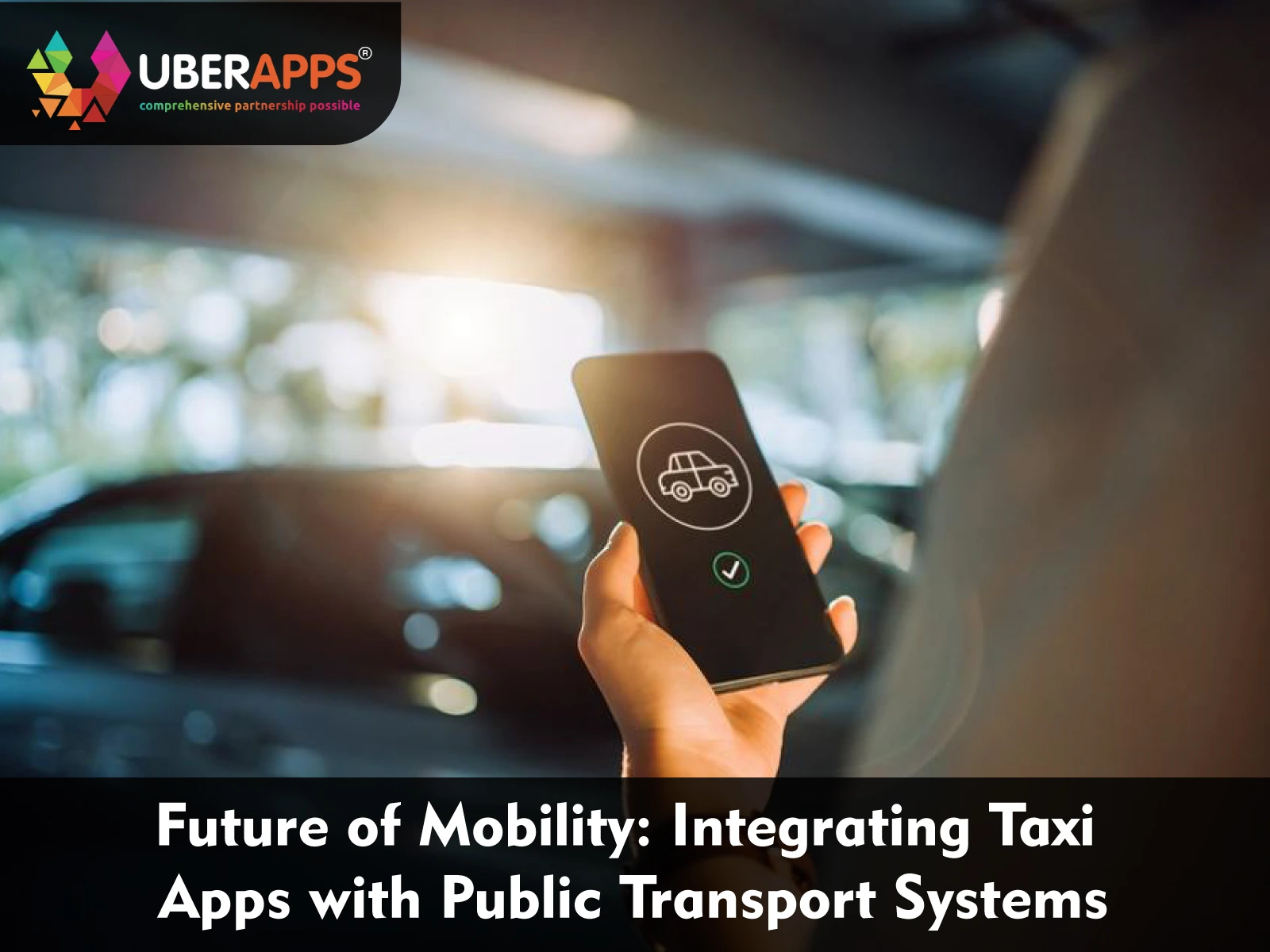
Future of Mobility: Integrating Taxi Apps with Public Transport Systems
Urban mobility is evolving at an unprecedented pace. Traditional silos—where taxi booking apps operated separately from buses, trains, and metros—are disappearing. Today, integrated mobility is the keyword driving innovation.
SaaS taxi apps and Uber clone solutions are reshaping how people commute by merging ride-hailing app features with public transport systems. The result? A unified mobility ecosystem where passengers move seamlessly between private and public modes, using one app and one payment method.
This shift not only benefits riders but also fleet operators, city planners, and governments striving for sustainable urban mobility.
The future of mobility lies in the seamless integration of taxi apps with public transport systems. As urban populations grow, the need for efficient, reliable, and eco-friendly mobility solutions has never been greater. SaaS taxi apps are bridging the gap between private rides and mass transit, enabling passengers to plan multimodal journeys from a single platform. Imagine booking a ride to the nearest metro station, paying for both the taxi and train in-app, and receiving real-time updates on your complete journey. This is no longer a futuristic vision but a reality made possible by advanced taxi app development, AI-driven fleet management, and smart payment integrations. By combining ride-hailing app features with public transport schedules, mobility providers can reduce congestion, lower emissions, and improve accessibility for millions. This blog explores how Uber clone solutions and SaaS-powered taxi apps are transforming cities into smarter, interconnected mobility ecosystems.
The Growing Need for Integrated Mobility Solutions
Rising Urbanization
By 2030, over 60% of the world’s population will live in cities.
Congestion, pollution, and unreliable commuting options are major challenges.
Passenger Expectations
Riders demand real-time information, cost transparency, and door-to-door convenience.
They prefer apps that combine multiple transport modes.
Technology Convergence
With SaaS taxi apps, APIs, and IoT integration, mobility platforms can connect with bus, metro, and train networks easily.
Key takeaway: Integration isn’t optional; it’s the future of mobility.
How Taxi Apps and Public Transport Can Work Together
First-Mile and Last-Mile Connectivity
- Taxis and ride-hailing services: play a crucial role in bridging the gap between homes, offices, and public transport stations.
- Passengers: can book a ride to the nearest bus stop or metro station.
- Fleet operators: optimize routes based on public transit schedules.
Unified Ticketing and Payments
- In-app payments: passengers can pay for both taxi and public transport in one transaction.
- Single QR code: or digital ticket.
- Wallet integration: with cards, UPI, and local gateways.
- Automated fare split: between mobility providers.
Real-Time Journey Planning
- Sync with APIs: SaaS taxi apps can connect with public transport APIs to provide real-time schedules.
- Dynamic route suggestions: (e.g., “Take the metro + short taxi ride”).
- Alerts: for delays, congestion, or alternative routes.
- AI-powered demand prediction: for peak times.
Role of SaaS Taxi Apps in Fleet Management & Integration
Centralized Fleet Management
- Track taxis: connecting to transport hubs.
- Balance supply-demand: with predictive algorithms.
- Manage operations: multi-city or multi-modal from one dashboard.
Data Sharing & Partnerships
SaaS taxi apps allow data collaboration with transport authorities.
Shared insights improve urban planning and reduce congestion.
Scalable Cloud Infrastructure
- Add fleets: expand services without new infrastructure.
- Real-time updates: across thousands of vehicles.
Key takeaway: SaaS taxi apps make fleet management future-ready and public-transport-friendly.
Uber Clone Apps: Accelerating Integrated Mobility
Why Uber Clone SaaS Platforms Work
- Ready-made apps: tailored for local needs.
- Faster deployment: with features like real-time tracking and in-app payments.
- Flexible APIs: to integrate metros, buses, or train systems.
Examples of Integration
- Uber Transit: already partners with local metros in the US.
- Bolt: integrates bus and scooter systems in European cities.
- Local startups: in Asia are experimenting with single-app multimodal transport.
Essential Ride-Hailing App Features for Public Transport Integration
For Passengers
- Multi-modal trip planning: for seamless journeys.
- Fare breakdown: across taxi + metro.
- Digital passes: for daily or monthly travel.
- Eco-friendly suggestions: to encourage sustainable travel.
For Drivers
- Optimized routes: to nearest public transport hubs.
- Demand prediction: near stations.
- Transparent earnings: linked to public-transport integration.
For Fleet Owners
- Usage reports: combining taxi + transit trips.
- Maintenance scheduling: based on trip frequency.
- Smart incentives: for drivers serving last-mile routes.
The Role of AI & Data in Seamless Mobility
AI-Driven Demand Forecasting
Predict when and where people will need rides connecting to public transport.
Smart Routing
Suggest combined routes like Taxi → Metro → Taxi.
Passenger Insights
Use data to offer discounts, loyalty programs, or subscription models.
Key takeaway: AI is the engine behind integrated urban mobility.
Benefits of Taxi App + Public Transport Integration
For Riders
- Convenience: one app, one payment, one journey.
- Reduced costs: compared to pure ride-hailing.
- Safer & eco-friendly: travel options.
For Drivers
- Higher demand: during peak public-transport hours.
- Reduced idle time: with predictable trip flows.
- Incentives: from both taxi platforms and transport agencies.
For Cities
- Lower congestion: and emissions.
- Better utilization: of existing infrastructure.
- Accessibility: for underserved areas.
Challenges in Integration (and Solutions)
- Challenge 1: Data Sharing Between Systems Solution: Secure APIs and blockchain-based records.
- Challenge 2: Payment Reconciliation Solution Unified payment gateways with automated fare split.
- Challenge 3: Passenger Adoption Solution Awareness campaigns, incentives, and loyalty programs.
Steps to Build an Integrated Taxi + Public Transport App
- Step 1: Choose a SaaS taxi app platform with public transport APIs.
- Step 2: Integrate payment systems for unified ticketing.
- Step 3: Customize ride-hailing app features for multimodal journeys.
- Step 4: Onboard drivers with last-mile incentives.
- Step 5: Collaborate with transport authorities for real-time data sharing.
- Step 6: Launch pilot programs in selected cities.
- Step 7: Scale to regional or national levels with fleet management tools.
The Future of Taxi App Development in Mobility Ecosystems
- EV Integration: Charging hubs near metro stations.
- Subscription Mobility: Monthly “mobility-as-a-service” plans.
- IoT Sensors: Smart buses, connected taxis, and predictive maintenance.
- Sustainability: Encouraging eco-friendly shared rides.
Key takeaway: The line between taxi apps and public transport is blurring into a single Mobility-as-a-Service (MaaS) platform.
Conclusion
The future of mobility is not about taxis competing with public transport but about collaboration. By integrating taxi apps with buses, metros, and trains, cities can create seamless, efficient, and sustainable mobility ecosystems.
SaaS taxi apps play a critical role in this transformation, offering scalability, real-time data, and fleet management tools that make integration possible. Riders benefit from the convenience of one app for all journeys, while fleet owners gain predictable demand and new revenue streams. Governments and city planners also benefit by reducing congestion and lowering carbon emissions.
The shift toward Mobility-as-a-Service (MaaS) shows that the future belongs to platforms that unify different transportation modes under one umbrella. Businesses investing in Uber clone SaaS solutions today are not just building taxi apps—they are shaping the future of connected urban transport.
Now is the time for startups, fleet operators, and public agencies to collaborate, integrate, and redefine how people move in tomorrow’s smart cities.
FAQS
1. How do taxi apps integrate with public transport systems?
Through APIs, payment gateways, and real-time schedule sharing, enabling seamless multimodal journeys.
2. What role do SaaS taxi apps play in integration?
They provide scalability, fleet management, and flexibility to connect with transit networks.
3. Can Uber clone solutions support public transport?
Yes, white-label Uber clone apps can integrate bus, metro, and train APIs for combined journeys.
4. What are the benefits for passengers?
Cost savings, convenience, and eco-friendly commuting through unified apps.
5. What challenges exist in integration?
Data sharing, payment reconciliation, and user adoption are the biggest hurdles—but solvable with SaaS platforms.
Author's Bio

Vinay Jain is the Founder of UBERApps and brings over 10 years of entrepreneurial experience. His focus revolves around software & business development and customer satisfaction.

